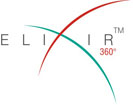:: Web 2.0
"Web 2.0" refers to what is perceived as a second generation of web development and web design. It is characterized as facilitating communication, information sharing, interoperability, User-centered design and collaboration on the World Wide Web. It has led to the development and evolution of web-based communities, hosted services, and web applications. Examples include social-networking sites, video-sharing sites, wikis, blogs, mashups and folksonomies.
The term "Web 2.0" was coined by Darcy DiNucci in 1999. In her article "Fragmented Future," she writes[
The Web we know now, which loads into a browser window in essentially static screenfuls, is only an embryo of the Web to come. The first glimmerings of Web 2.0 are beginning to appear, and we are just starting to see how that embryo might develop. ... The Web will be understood not as screenfuls of text and graphics but as a transport mechanism, the ether through which interactivity happens. It will [...] appear on your computer screen, [...] on your TV set [...] your car dashboard [...] your cell phone [...] hand-held game machines [...] and maybe even your microwave.
Her arguments about Web 2.0 are nascent yet hint at the meaning that is associated with it today.
The term is now closely associated with Tim O'Reilly because of the O'Reilly Media Web 2.0 conference in 2004. Although the term suggests a new version of the World Wide Web, it does not refer to an update to any technical specifications, but rather to cumulative changes in the ways software developers and end-users utilize the Web. According to Tim O'Reilly:
Web 2.0 is the business revolution in the computer industry caused by the move to the Internet as a platform, and an attempt to understand the rules for success on that new platform.
Definition
"Web 2.0" refers to a second generation of web development and design, that facilitates communication, secure information sharing, interoperability, and collaboration on the World Wide Web. Web 2.0 concepts have led to the development and evolution of web-based communities, hosted services, and applications such as social-networking sites, video-sharing sites, wikis, blogs, mashup and folksonomies.
Characteristics
Web 2.0 websites allow users to do more than just retrieve information. They can build on the interactive facilities of "Web 1.0" to provide "Network as platform" computing, allowing users to run software-applications entirely through a browser. Users can own the data on a Web 2.0 site and exercise control over that data. These sites may have an "Architecture of participation" that encourages users to add value to the application as they use it. This stands in contrast to traditional websites, the sort that limited visitors to viewing and whose content only the site's owner could modify. Web 2.0 sites often feature a rich, user-friendly interface based on Ajax and similar client-side interactivity frameworks, or full client-server application frameworks such as OpenLaszlo, Flex, and the ZK framework.
The concept of Web-as-participation-platform captures many of these characteristics. Bart Decrem, a founder and former CEO of Flock, calls Web 2.0 the "participatory Web"[ and regards the Web-as-information-source as Web 1.0.
The impossibility of excluding group-members who don’t contribute to the provision of goods from sharing profits gives rise to the possibility that rational members will prefer to withhold their contribution of effort and free-ride on the contribution of others. This requires what is sometimes called Radical Trust by the management of the website. According to Best, the characteristics of Web 2.0 are: rich user experience, user participation, dynamic content, metadata, web standards and scalability. Further characteristics, such as openness, freedom[ and collective intelligence by way of user participation, can also be viewed as essential attributes of Web 2.0

